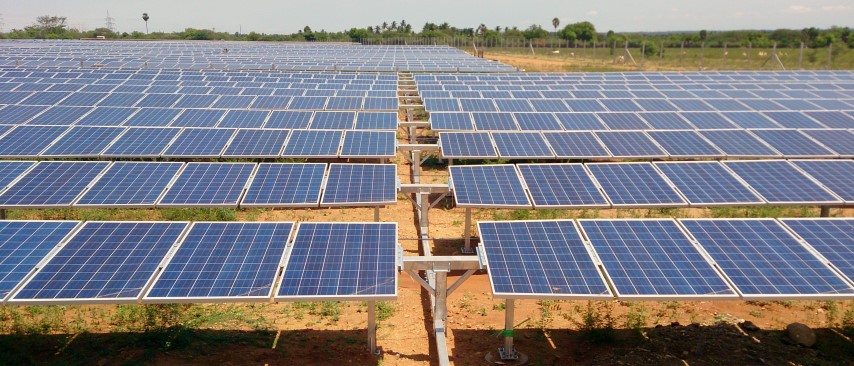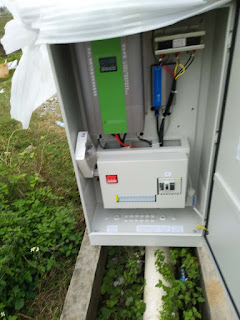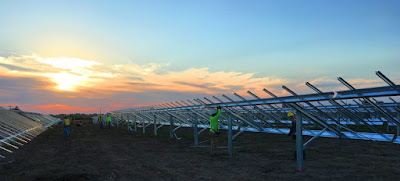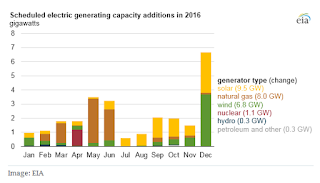 |
| 10 Reasons to Install a Solar Powered Well Pump System |
Have you ever thought about installing a solar power well pump? Do you have a rural or isolated location where you need to pump water either from the surface or from hundreds of feet underground? If so, a solar power well pump is the perfect solution.
Technology developments in both pumps and solar power have made this possible. Both solar panels and solar pumps have made advances which make them capable handling a wide range of water pumping needs. Many of these systems did not exist just a few years ago.
Below are the top 10 reasons to install a solar well pump. If you have never thought about installing a solar power system before, browse through the list and see if you can think of any uses. It is surprising, when remote low cost water pumping options are made available, ideas and uses pop into mind! Don't delay, find an install a system today.
Pump water anywhere on earth. No external power required
The problem with pumping water in rural locations is the need to run electricity to the site. For many years wind power and windmills were used in these secluded locations. Windmills are expensive and hard to maintain. There are better options today.
The breakthrough in solar water pumping is that there is no need for an external power source. The sun and the solar panels provide all of the electricity needed to pump water from hundreds of feet underground.
Solar well pumps are more efficient and more powerful than ever before
Solar power pumps of today are not like the novelty solar fountain pumps of the past. These are high power, efficient, commercial products. Top of the line solar well pumps are made of stainless steel and feature brushless DC motors.
Stainless steel is used for the pump housing and pumping mechanism for proper sanitation and to ensure a long life. The stainless steel will resist corrosion even when suspended in water for years. The stainless pumping mechanisms minimizes wear due to sand and other particles, while lifting water from deep underground.
The brushless DC motors are some of the most efficient on the market. Since they are brushless, there is never a need to remove them from the well to change the brushes. These motors are rated for tens of thousands of hours of operation without maintenance.
Systems are low cost and readily available
Solar power systems of the past had high price tags attached, in the tens of thousands of dollars. Advances in technology have made low cost systems possible and readily available. One of the main advances making this possible are solar cells and panels. Solar cell manufacturing has progressed to the point where it is very affordable. A system that previously cost tens of thousands of dollars is now in the low thousands. A 10X decrease!
A basic, but complete well pump system will cost about $2000. This baseline system will pump water from a few hundred feet deep, at a few gallons per minute flow rate. This basic system will replace most windmills, matching both depth and flow rate. They will keep a large pond full of water with no operating cost or pump enough water for a few hundred head of cattle.
Higher performance systems increase in cost to about three to four thousand dollars as more depth and flow rate are required. These systems are suitable to provide water to entire households or hundreds of head of livestock. They can replace your standard household well pump. The slight cost increase in these systems due to the higher performance, but remember these are complete systems, solar panels (a large cost) included.
Specialized systems can cost in the low tens of thousands of dollars. These are high performance systems pumping many gallons of water per second, sufficient for a complete farm or even remote village. They are overkill for most livestock and household needs. They are more suitable for large farming operations and crop irrigation.
No ongoing operating costs
After the initial system cost, which is often comparable to other well options, there are no ongoing operating costs. Normal wells burn money every time they turn on to pump water. This is not the case for solar well pumps, which get their power from the sun.
Every single day the sun is shining you are earning free money from the sun. What better deal exists? The sun shines down and water is pumped up from deep underground, saving you from overpriced electricity charges.
Much cheaper than installing main power to remote locations
Trenching main power to a remote location is costly in both time and money. This is one reason windmills of the past were so popular, since they required no electricity to operate. The "windmills of today" are solar power systems capable of pumping water without connecting to main power. You are no longer limited to how long of a power cable can be trenched into the ground or how hard the wind blows.
Complete systems can be shipped right to your door
Complete systems can be shipped right to your door in only a matter of days. It only takes two boxes, one for the pump/controller and one for the solar panels, to ship directly to your house or office. Many standard systems can be shipped by normal shipping methods (USPS, UPS, FedEx) without the need for freight shipping. This allows for shipping systems to all locations and all residences.
Systems are modular and can be upgraded over time
The components that make up solar power well pump systems are very modular. They can be swapped out and upgraded as needed. If more overcast performance is needed, extra solar panels can be added. If more water is needed per day, batteries and extra panels can be added, so water can be pumped during the night. If more volume is needed, the pump can easily be replaced to a higher power model offering higher flow.
Solar well pumps are easy to maintain
There are very few mechanical components. Solar panels are highly reliable and do not require any maintenance besides a quick wash every year or two. Brushless motors do not have brushes (hence the name) and therefore require no maintenance. The pumping mechanisms are highly reliable and are easy to replace in the field. A system should be able to pump tens of thousands of gallons without any maintenance.
Cheap to maintain
There are two items in solar well pump systems which may need occasional maintained, both of which are very low cost. Occasionally, every year to two, the solar panels should be washed off to ensure maximum performance. Less often, about every 5 years, it is good to replace the pumping mechanisms which can degrade over time reducing performance. These mechanism cost about $20 dollars and can be replaced it the field.
Systems can be self-installed in a single weekend
Solar power well pumps systems are very simple and can be installed in a single weekend. All of the solar panel connections are made with waterproof connectors, no soldering required. The solar pump, solar panels, and sensors all connect to the controller using screw terminals, again no soldering required. The pump should connect easily to existing power cables and plumbing. Just lower it down into the well and assuming you finish installation before night, water will start flowing!
More info:





















